KRONES讲义
- 格式:ppt
- 大小:121.10 MB
- 文档页数:125



伯南克第一课英文讲义伯南克第一课英文讲义北京时间3月21日凌晨,美联储主席伯南克稍早时在乔治-华盛顿大学商学院进行了针对该院学生系列讲座的第一讲,题目为:美联储的基本使命。
以下是伯南克本次讲座的英文讲义全文。
(资料来源于美联储网站)The Federal Reserve and the Financial CrisisOrigins and Mission of the Federal Reserve, Lecture 1George Washington University School of BusinessMarch 20, 2012, 12:45 p.m。
[Applause]President Steve Knapp: Well, good afternoon. I think the students here may know who I am but for those who are watching the broadcast, I'm Steve Knapp, President of George Washington University. And it's really a pleasure to welcome you to today's first class in the series entitled Reflections on the Federal Reserve and its place in today's economy, featuring the Chairman of the Federal Reserve, Dr. Ben Bernanke. I'm pleased to acknowledge that we have with us two of the university's trustees, Nelson Carbonell and Mark Shenkman, and also a number of faculty members are here in the audience and some of them will be teaching later in the series. Today is the first university lecture series delivered by a sitting Chairman of the Federal Reserve. I think it does provide an extraordinary opportunity for the students who are here in the classroom, but also for those watching online. They have an opportunity to gain insight into the nation's central banking system and a wide range of issues that affect this country and the world. I do want to say that there are microphones available for the students, and certainly encourage you when the Chairman's lecture is over to avail yourself of those and we hope there'll be a lively exchange of questions and answers at the end of the lecture. It's now a distinct honor to introduce the Chairman of the Board of Governors of the Federal Reserve System, Dr. Ben Bernanke. Dr. Bernanke took office in 2006, and is now serving a second term as Chairman. He also serves as Chairman of the Federal Reserve's Open Market Committee. Before his appointment as Chairman, Dr. Bernanke was involved with the Federal Reserve in several roles as a Member of the Board of Governors, as a visiting scholar, and as a member of the Academic Advisory Panel at the Federal Reserve Bank of New York. He also served as Chairman of the President's Council of Economic Advisers from June 2005 to January 2006.Now Chairman Bernanke is no stranger to academia. He's been a faculty member at Princeton, Stanford and New York University, as well as the Massachusetts Institute of Technology. He's held a Guggenheim and a Sloan Fellowship, and is a fellow of the Econometric Society and the American Academy of Arts and Sciences. Chairman Bernanke received aBachelor of Arts from Harvard University and a PhD from MIT. Ladies and gentlemen, please join me in welcoming Chairman of the Federal Reserve, Dr. Ben Bernanke.[ Applause ]Chairman Ben Bernanke: Thank you very much, President Knapp. Gee, this is great. This is what I used to do before I got in this line of work for 23 years and I've always enjoyed engaging with college students. So thank you for being here, and I hope we do have a good conversation. Let me particularly thank President Knapp and Professor Fort and George Washington University. As everybody here knows, these lectures are part of a real course and after I get off the scene there will be other professors talking about other aspects of the Fed and you'll hear different points of view which is great. And you'll have to do some papers and all those kinds of things and I'm going to read a few of the paper. So, I look forward to doing that.So, I'll be talking from slides, which is in part for the purpose of making this available to others who might be interested. These slides will be posted on the Federal Reserve's website, , as we go through. And so, if you need extra copies, by all means do that. And as President Knapp said, I'm going to be talking for a while from the presentation but at the end, I hope we can have some questions and answers.So, let me get started. So what I want to talk about in these four lectures is the Federal Reserve and the financial crisis. Now, my thinking about this is very much conditioned by my experience as an economic historian. I think when you talk about the issues that just occurred of the last few years, it makes the most sense to think about it in the broader context of central banking as its taking place over the centuries. So, even though we're going to be focusing a good bit of the lectures, particularly next week, on the financial crisis and how the Fed responded. I think we need to go back and look at the broader context. So, as we talk about the Fed we'll be talking about the origin and mission of central banks in general, and we're looking at previous financial crises, most notably the Great Depression, and see how that informed the Fed's actions and decisions in the recent crisis. So let me just give you a roadmap of the four lectures. Today, lecture one, we won't touch on the current crisis at all. Instead, we'll talk about what central banks are, what they do, how central banking got started in the United States and we'll do some history. We'll talk about how the Fed engaged with its first great challenge, the Great Depression of the 1930s. The second lecture on Thursday, we'll take up the history. We'll review developments in central banking and with the Federal Reserve after World War II talking about the conquest of inflation, the great moderation and other developments that occurred after World War II. But we'll spend a good bit of time lecture two, in lecture two, talking about the build-up to the crisis and some of the factors that led to the crisis of 2008, 2009.Then next week, we'll get into the more recent events. In lecture three, we'll talk about the intense phase of the financial crisis, its causes, its implications, and particularly, the response to the crisis by the Federal Reserve and by other policymakers. And then, in the final lecture, lecture four, we'll look at the aftermath. We'll talk about the recession that followed the crisis, the policy response of the Fed including monetary policy, the broader response in terms of the changes infinancial regulation, and a little bit of forward-looking discussion about how this experience will change how central banks operate and how the Federal Reserve will operate going forward. Sothis is our topic today is origins and missions of the Federal Reserve. So let's talk in general about what a central bank is. If you've had some background in economics you know that a central bank is not a regular bank, it's a government agency, and it stands at the center of the monetary and financial system of a country. Central banks are very important institutions, they have helped to guide the development of modern financial systems, modern monetary systems and they play a major role in economic policy. Now, we've had various arrangements over the years but today, virtually, all countries have central banks. The Federal Reserve in the United States, the Bank of Japan in Japan, Bank of Canada, and so on. The main exception is only cases where you have what's called a currency union where a number of countries collectively share a central bank. The most important example by far of that is the European Central Bank which is central bank to 17 European countries who share the common currency, the Euro. But even in that case, each of the participating countries does have its own central bank which is part of the overall system of the Euro. So central banks are now ubiquitous, even the smallest countries typically have central banks. Now, this is a very important theme here, what do Central Banks do? What is their mission? And as I'll discuss throughout the lectures, it's convenient to talk about two broad aspects of what central banks do. The first is to try to achieve macroeconomic stability. And by that, I generally mean stable growth in the economy, avoiding big swings, recessions and the like, and keeping inflation low and stable. So that's the economic function of a central bank. The other function of central banks, which is going to get a lot of attention, obviously, in these lectures, is the financial stability function. Central banks try to keep the financial system working normally and in particular, they either, they try to prevent or if unsuccessful in preventing they try to mitigate financial panics or financial crises. And I'll talk more about what those are. Now what are the tools that central banks use to achieve these two broad objectives? Very, in very simple terms, there are basically two broad sets of tools. On the economic stability side, the main tool as I'm sure everyone knows is monetary policy. In normal times, the Fed, for example, can raise or lower short-term interest rates. It does that by buying and selling securities in the open market. And again, in normal times, if the economy is growing too slowly or inflation is falling too low, the Fed can stimulate the economy by lowering interest rates. Lower interest rates feed through to a broad range of other interest rates that encourages spending, acquisition of homes for example, construction, investment by firms, borrowing. It just generates more demand, more spending and more investment in the economy, and that creates more thrust in growth so that to stimulate an economy, you lower interest rates. And similarly, if the economy is growing too hot, if inflation is becoming a problem, then the normal tool of central bank is to raise interest rates. So by raising the overnight interest rate, known in the United States as the federal funds rate, higher interest rates feed through the system and help to slow the economy by raising the cost of borrowing, of buying a house, of buying a car, or of investing in capital goods and that will slow the economy and reduce pressure of overheating. So, monetary policy is the basic tool that central banks have used for many, many years to try to keep the economy at a more or less even keel in terms of both growth and inflation.Now, a little less familiar is the main tool of central banks in dealing with financial panics or financial crises. And that tool is the provision of liquidity. So to address financial stabilityconcerns and for reasons I'll explain, one thing that central banks can do is make short-term loans to financial institutions. As I'll explain, providing short-term credit to financial institutions during a period of panic or crisis can help calm the market, can help stabilize those institutions and can help mitigate or bring to an end a financial crisis. So this activity which is an old one, as I'll discuss, is known as the lender of last resort tool. So again, if financial markets are disrupted, financial institutions don't have alternative sources of funding, then the central bank stands ready to service the lender of last resort providing liquidity to the system and thereby helping to stabilize the financial system.Now, there's a third tool which the Fed has had from the beginning and most central banks have which is financial regulation and supervision. Central banks usually play a role in supervising the banking system, assessing the extent of risk on their portfolios, making sure their practices are sound, and in that way, trying to keep the financial system healthy. To the extent that financial system can be kept healthy and its risk-taking within reasonable bounds, then the chance of a financial crisis occurring in the first place is reduced. However, this activity, and I will come back to it, this is something which is not unique to central banks. In the United States, for example, there are a number of different agencies, like the FDIC or the Office of the Comptroller of the Currency that work with the Fed in supervising the financial system. So this is not unique to central banks and so I'll be down playing this for the time being and focusing on the two principle tools, monetary policy and lender of last resort activities.Now, where do central banks come from? One thing people don't appreciate, I think, is that central banking is not a new development. It's been around for a very long time. The Swedes set up a central bank in 1668, three and a half centuries ago. The Bank of England was founded in 1694 and that of course for many decades or if not centuries was the most important and influential central bank in the world, and France in 1800. So, central bank theory and practice is, again, not a new thing. We have been thinking about these issues collectively as an economics profession and in other contexts for many, many years. Now, I've exaggerated slightly in a sense that, say, the Bank of England in 1694 wasn't set up from scratch, it's a full-fledged central bank, it was originally a private institution. And over time, it acquired some of the functions of a central bank such as issuing money or serving as lender of last resort. But over time, these central banks became essentially government agencies, government institutions as they all are today. Certainly, one important responsibility of central banks for much of the period that I'm talking about was to manage the gold standard to issue paper money that was backed by gold and I'll talk more about gold in a few moments.Now, the lender of last resort function, which I mentioned earlier, became important in the-- mostly in the 19th century. Early in the 19th century, the Bank of England was doing a lot of this type of activity and they became very good at it. And as we'll see, while the United States was suffering with banking panics in the latter part of the 19th century, banking panics in the United Kingdom were quite rare. So the Bank of England sort of set the pace in some sense. It was the most important central bank and it helped establish the practices and the approaches that we still use today. Now, I need to talk a little bit because it's less familiar about what a financial panic is. In general, a financial panic is sparked by a loss of confidence in an institution and I think the bestway to explain this is to give a familiar example. How many of you have ever seen the movie "It's a Wonderful Life"? No? Less people are watching Christmas movies than they used to be, I guess [laughter]. Well, one of the problems that Jimmy Stewart runs into as a banker in “It’s a Wonderful Life” is a threatened run on his institution. And what is a run? Well, let's imagine a situation like Jimmy Stewart's situation before there was any deposit insurance, no FDIC. And imagine you have a bank on the corner, just a regular commercial bank, the first bank of Washington, D.C., and this bank makes loans to businesses and the like, and it finances itself by taking deposits from the public and deposits are demand deposits, which means that anybody can pull out their money anytime they want which is important because people use deposits for ordinary activities, like shopping.Now imagine what would happen if for some reason, a rumor goes around that this bank has made some bad loans and is losing money. As a depositor, you say to yourself, "Well, I don't know if this rumor is true or not。
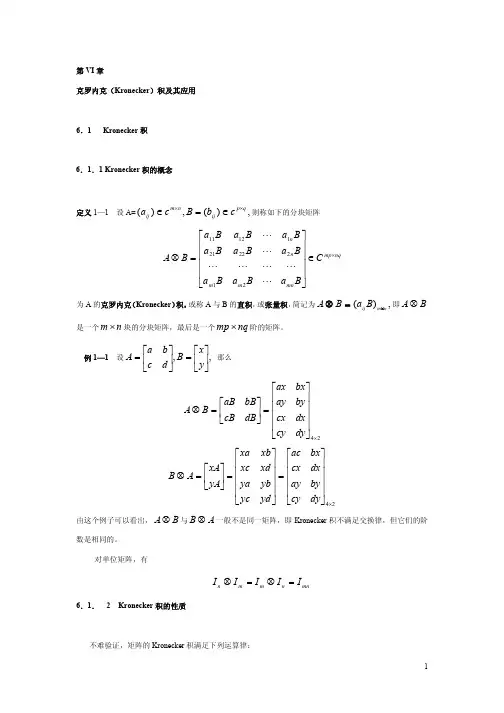
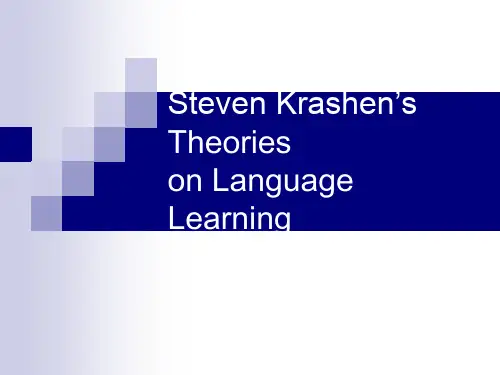
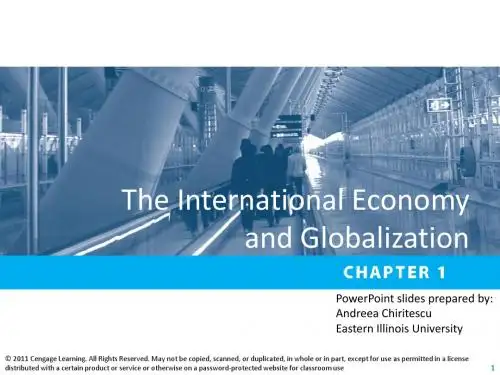
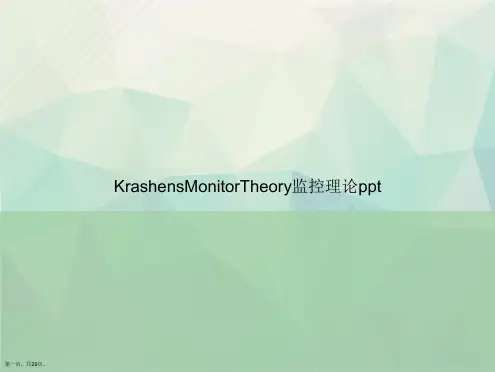

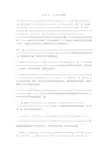
lesson 12 Crankshaf曲轴The principal force an engine crankshaft must resist is the bending action of the connecting rod thrust when the piston is at top center. Then the maximum gas pressure acts straight down on the crankpin and tends to bend the shaft between the adjacent supporting bearings.The crankshaft must also withstand the twisting or “torsional” forces produced by the turning effort of the connecting rod.发动机曲轴必须承受的主要力量是在活塞处于上死点时连杆推力产生的弯曲力。
此时,最大气体压力垂直向下作用在曲轴销上,两个相邻的支撑轴瓦之间的曲轴趋于弯曲。
曲轴也必须承受得住连杆翻转所产生的扭弯或扭转力。
Most modern engines have one-piece crankshafts forged from carbon steel or from alloy steel containing nickel, chromium, and molybdenum.多数现代柴油机是整体曲轴,用碳钢或含有镍、铬和钼的合金钢锻造而成。
In large in-line engines of many cylinders, the crankshaft may be two forgings, flanged at the ends and bolted together.在大型直列发动机的许多汽缸里,曲轴可以为2根锻件,其端部为凸缘,用螺栓连接起来。
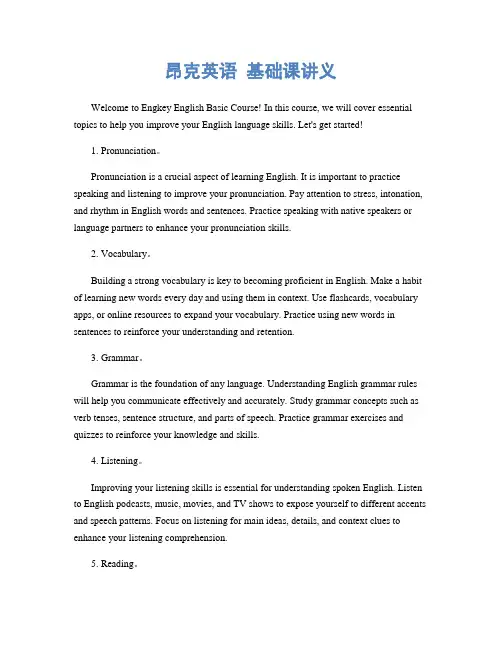
昂克英语基础课讲义Welcome to Engkey English Basic Course! In this course, we will cover essential topics to help you improve your English language skills. Let's get started!1. Pronunciation。
Pronunciation is a crucial aspect of learning English. It is important to practice speaking and listening to improve your pronunciation. Pay attention to stress, intonation, and rhythm in English words and sentences. Practice speaking with native speakers or language partners to enhance your pronunciation skills.2. Vocabulary。
Building a strong vocabulary is key to becoming proficient in English. Make a habit of learning new words every day and using them in context. Use flashcards, vocabulary apps, or online resources to expand your vocabulary. Practice using new words in sentences to reinforce your understanding and retention.3. Grammar。
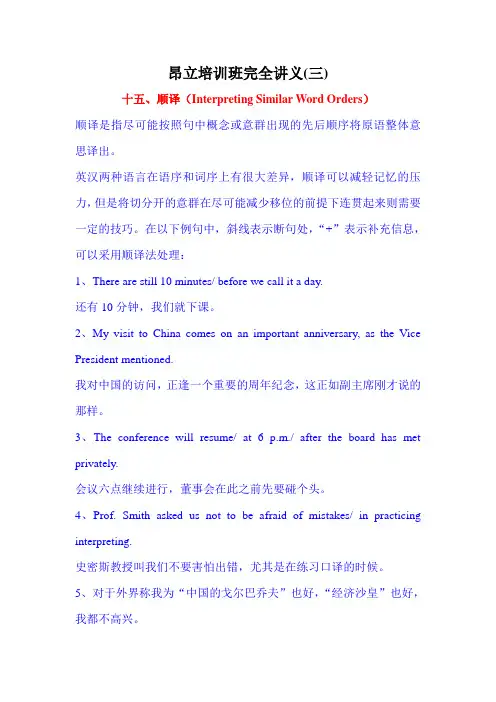
昂立培训班完全讲义(三)十五、顺译(Interpreting Similar Word Orders)顺译是指尽可能按照句中概念或意群出现的先后顺序将原语整体意思译出。
英汉两种语言在语序和词序上有很大差异,顺译可以减轻记忆的压力,但是将切分开的意群在尽可能减少移位的前提下连贯起来则需要一定的技巧。
在以下例句中,斜线表示断句处,“+”表示补充信息,可以采用顺译法处理:1、There are still 10 minutes/ before we call it a day.还有10分钟,我们就下课。
2、My visit to China comes on an important anniversary, as the Vice President mentioned.我对中国的访问,正逢一个重要的周年纪念,这正如副主席刚才说的那样。
3、The conference will resume/ at 6 p.m./ after the board has met privately.会议六点继续进行,董事会在此之前先要碰个头。
4、Prof. Smith asked us not to be afraid of mistakes/ in practicing interpreting.史密斯教授叫我们不要害怕出错,尤其是在练习口译的时候。
5、对于外界称我为“中国的戈尔巴乔夫”也好,“经济沙皇”也好,我都不高兴。
Whatever the foreign media call me, either “China’s Gorbachev”or “economic czar”, or anything else, I am not happy about that.6、Please allow me to say something/ on behalf of/ my colleagues of ABC Organization.请允许我说几句话,来代表我们ABC组织的同事们表达我们的心意。
Unit 1Lifestyles听歌学英语——Fill in the blanks after listening to the song.2012年伦敦奥运会主题曲是由英国摇滚乐团缪斯(Muse)合唱团演唱的Sur v i v al,在运动员入场及颁奖仪式上播放。
缪斯(Muse)是一支英国摇滚乐乐队,这支乐队于1994年在英国德文郡的Teignmouth镇创立,乐风融合了独立摇滚、前卫摇滚、重金属音乐、古典音乐与电音。
在不同时期,他们共用过Gothic Plague,Fixed Penalty和Rocket Baby Dolls作为乐队名,1997年乐队正式更名为Muse。
SurvivalRace, life’s a raceAnd I am gonna winYes, I am gonna winAnd I’ll ①light the fuseAnd I’ll never loseAnd I choose to survive②Whatever it takesYou won’t pull aheadI’ll keep up the paceAnd I’ll give you my strengthTo the whole human raceYes,I am preparedTo stay aliveAnd I won’t forgive, vengeance is ③mineAnd I won’t give inBecause I choose to thriveI’m gonna winRace, it’s a raceBut I’m gonna winYes,I’m gonna win And I will light the fuse I’ll n ever ④lose And I choose to survive Whatever it takesYou won’t pull ahead I’ll ⑤keep__up the pace And I’ll refill my strength To the whole human raceYes,I’m gonna win Fight! Fight! Fight! Fight! Win! Win! Win! Win!生存竞赛,人生就是一场竞赛我会赢得胜利没错,我将赢得胜利我将点燃引线我将永不挫败我选择生存无论如何,不计代价你绝无法超前我将与你并驾齐驱我会贡献我的能力给整个人类是的,我准备好了来保持不败而我不会放弃,我复仇的机会来了我绝不气馁因为我选择发光我将赢得胜利竞赛,人生就是一场竞赛我会赢得胜利没错,我将赢得胜利我将点燃引线我将永不挫败我选择生存无论如何,不计代价你绝无法超前我将与你并驾齐驱我会贡献我的能力给整个人类是的,我将赢得胜利奋斗!奋斗!奋斗!奋斗!胜利!胜利!胜利!胜利!导航知素养——A guide to the unit主题语境人与自我生活与学习(A Perfect Day &Relaxing)健康的生活方式,积极的生活态度做人与做事(A V olunteer Teacher &City and Country)优秀品行,正确的人生态度,公民义务与社会责任语言知识(1)语音:掌握重音、语调、节奏等的变化,表达意义、意图和态度等。
copying and/or distribution without author's consent.tracking_dart_zh.ppt /Wang Fancopying and/or distribution without author's consent.tracking_dart_zh.ppt /Wang FanNo utilisation,copying and/or distribution without author's consent.tracking_dart_zh.ppt /Wang FanKRONES AG 2008 -No utilisation,copying and/or distribution without author's consent.tracking_dart_zh.ppt /Wang Fan再运行学习过程前,先选择复位再选择激活author's consent.tracking_dart_zh.ppt /Wang Fancopying and/or distribution without author's consent.tracking_dart_zh.ppt /Wang Fan选择来存储所选的author's consent.tracking_dart_zh.ppt /Wang Fanand/or distribution without author's consent.tracking_dart_zh.ppt /Wang Fan选择进入示波器诊检测来自:确认信号,author's consent.tracking_dart_zh.ppt /Wang Fan送带(最后一条输送带),tracking_dart_zh.ppt /Wang Fan选择开始诊断选择©KRONES AG 2008 -No utilisation,copying and/or distribution without author's consent.tracking_dart_zh.ppt /Wang FanKRONES AG 2008 -No utilisation,copying and/or distribution without author's consent.tracking_dart_zh.ppt /Wang Fanand/or distribution without author's consent.tracking_dart_zh.ppt /Wang FanKRONES AG 2008 -No utilisation,copying and/or distribution without author's consent.tracking_dart_zh.ppt /Wang Fancopying and/or distribution without author's consent.tracking_dart_zh.ppt /Wang FanNo utilisation,copying and/or distribution without author's consent.tracking_dart_zh.ppt /Wang Fancopying and/or distribution without author's consent.tracking_dart_zh.ppt /Wang Fancopying and/or distribution without author's consent.tracking_dart_zh.ppt /Wang Fan。
2021版高考英语一轮复习精细化学通语法第一讲名词讲义202104291155名词的分类(一)可数名词1.规则名词的6种复数变化形式变化规则例词一样情形下在词尾直截了当加s mouth→mouths house→houses以s,x,ch,sh 结尾的名词在词尾加esglass→glassesmatch→matches以辅音字母+y结尾的名词变y为i再加escountry→countriesfactory→factories以元音字母+y结尾的名词在词尾直截了当+sholiday→holidaysmonkey→monkeys以o结尾的名词一样在词尾加spiano→pianosphoto→photos 有些在词尾加eshero→heroespotato→potatoes以f, fe结尾的名词一样要变f或fe为v+esself→selveswolf→wolves 少数直截了当加sroof→roofsbelief→beliefs[巧学助记] 为了自己(self)活命(life),小偷(thief)和他的妻子(wife)手里拿着刀子(knife)和一片树叶(leaf)站在架子(shelf)上,把狼(wolf)劈成两半(half) 2.不规则名词的3种复数变化形式[名师指津] (1)fish表示不同种类的鱼时,其复数形式为fishes,而表示同一种鱼时,其单复数形式相同;(2)people指“人们”时单复数同形,指“民族”时,其复数为peoples。
3.合成名词的2种复数形式(1)若有中心词,则把中心词变成复数;若无中心词,则把最后一个词变成复数。
passerby→passersby, sisterinlaw→sistersinlaw,grownup→grownu ps(2)“man/woman+n.”变复数时,作定语的man/woman和中心词都要变复数:women engineers。